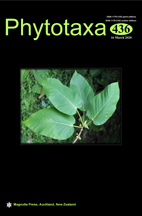Abstract
The Balkan Peninsula is recognized as an important centre of native and endemic plant species diversity as well as an important wildlife refuge area. However, although Croatia hosts more than half of plant species found on the Balkan Peninsula, the endemic taxa have never been evaluated or used to define conservation priorities. We analyzed the qualitative composition of the endemic and range restricted species, their spatial distribution, centres of endemism, and conservation status (non-IUCN).
We generated an updated and annotated checklist of 349 endemic or range-restricted plant taxa (6.9% of the entire native flora), subdivided in 231 species, 103 subspecies and 15 hybrids and belonging to 149 genera and 43 families. Among the 231 species, 69 are considered endemic to Croatia and confined to a small area (< 4,500 km2), while 162 are considered range restricted species, which have larger ranges and/or are shared with neighbouring countries. The genera Centaurea and Hieracium have the highest number of endemic and range restricted taxa.
Spatial analyses indicated two notable centres of species richness—the mountainous Dinaric Alps and the SE Adriatic coast, including the islands. Regions with a high richness of range-restricted taxa did not coincide with areas of high richness of endemic species.
Taxa exhibited modest bimodality with respect to altitudinal distribution. In addition, the greatest diversity of taxa is concentrated in northwest of Croatia and could be related to differences in mean annual air temperatures and the duration of insolation.
As regards their conservation status, 13 of the 349 taxa are endangered, and 62 are near threatened or vulnerable. Despite relatively strong legal protection of endemic and range restricted species, 37 taxa remain unprotected. Changes in conservation practice are therefore proposed.

